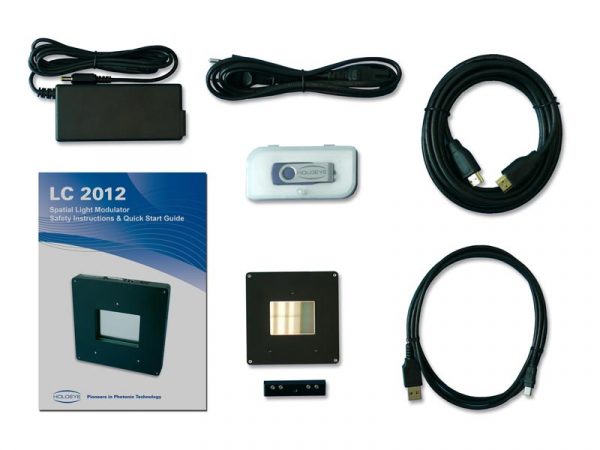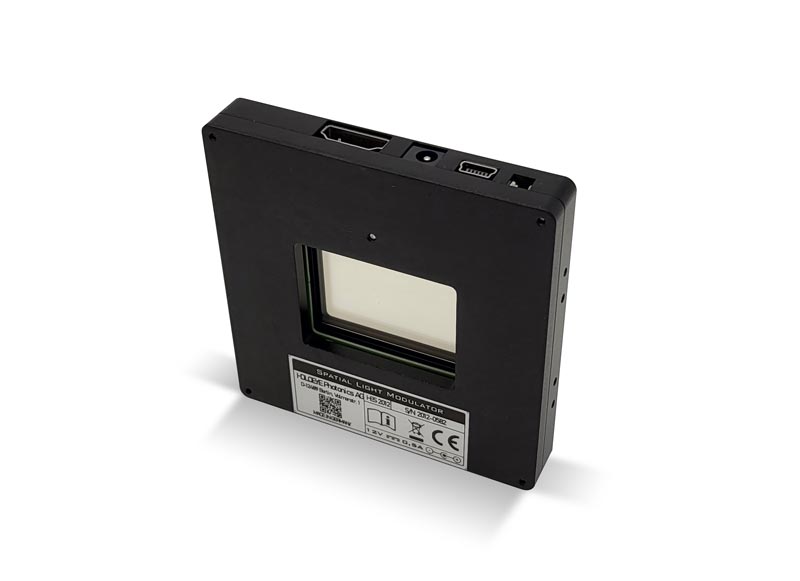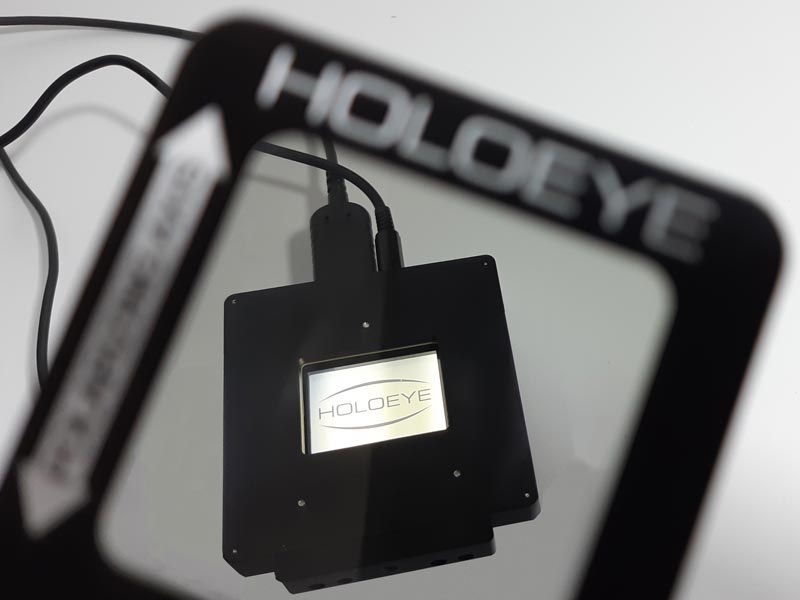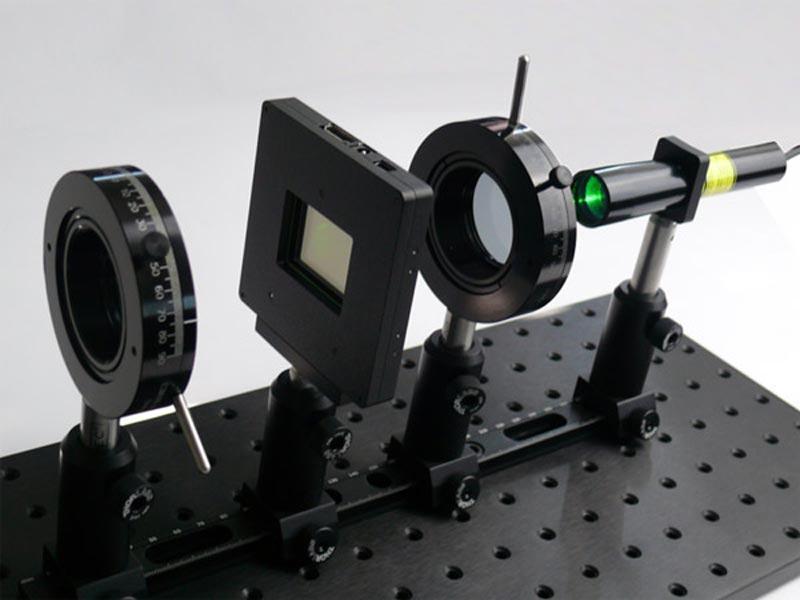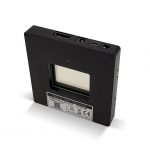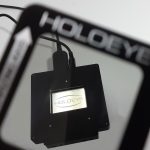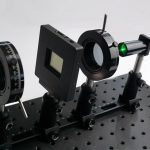LC 2012: XGA Transmissive Spatial Light Modulator
The LC 2012 is an entry-level Spatial Light Modulator (SLM) system featuring a 1024 x 768 pixel (XGA) translucent liquid crystal microdisplay. It’s ideal for educational purposes and proof-of-concept projects.
Utilizing a twisted nematic (TN) liquid crystal display, the LC 2012 primarily enables phase modulation. Due to inherent polarization coupling, some amplitude modulation will also occur. The SLM delivers an approximate phase shift of at 450 nm, at 532 nm, and at 800 nm.
For straightforward integration into optical setups, the microdisplay and its drive electronics are housed in a compact enclosure. The LC 2012 connects via a standard HDMI interface for addressing, while brightness and contrast adjustments are managed through a USB interface. Depending on the configuration and incident polarization/polarizer-analyzer settings, the LC 2012 SLM can be used for either phase (primarily) or amplitude modulation.
Applications
- Research & Proof-of-Concept Development: Its accessible nature and robust software support make it an excellent tool for exploring new optical phenomena, testing theoretical models, and validating experimental setups in a lab environment.
- Education & Training: It serves as an invaluable teaching aid for demonstrating fundamental optics principles, such as diffraction, interference, polarization, and wavefront manipulation, in university courses and practical workshops.
- Holography & Digital Holography: The device can be used for generating and displaying computer-generated holograms (CGHs), enabling dynamic holographic imaging, optical data storage, and holographic display research.
- Laser Beam Shaping & Steering: By applying specific phase patterns, the LC 2012 can reshape laser beams (e.g., converting a Gaussian beam into a flat-top or generating complex beam profiles like Bessel or vortex beams) or precisely steer them for various applications.
- Adaptive Optics & Wavefront Control: While often associated with more advanced SLMs for real-time atmospheric compensation, the LC 2012 can be used for basic wavefront correction, aberration compensation, and experimental setups involving controlled phase manipulation.
- Optical Tweezers & Particle Manipulation: Creating controlled light patterns, the SLM can be employed to trap and manipulate microscopic particles, which is valuable in fields like biophysics and materials science.
- Interferometry: Its phase modulation capabilities make it useful in various interferometric setups for optical testing, measurement, and sensing.
- Optical Information Processing & Computing: SLMs are fundamental components in experimental optical computing systems and for tasks requiring spatial modulation of optical signals.
- Materials Processing (Exploratory): For specific, low-power applications or preliminary studies, the ability to create customized light patterns can be explored for micro-machining or surface modification.
HOLOEYE Spatial Light Modulator Catalog
Publications Featuring LC 2012
- Daza-Salgado, D., Medina-Segura, E., Rodriguez-Fajardo, V. et al. A Higher-order poincaré ellipsoid representation for non-cylindrical vector beams. Discov Appl Sci 7, 456 (2025). https://doi.org/10.1007/s42452-025-06860-2
- Youjia Gu and Yasuhiro Takaki, “See-through characteristics of a holographic contact lens display and design consideration for a spatial light modulator,” Opt. Continuum 4, 132-155 (2025)
- Moritsugu Sakamoto, Riku Tobita, Kohei Noda, Masato Suzuki, Tomoyuki Sasaki, Nobuhiro Kawatsuki, and Hiroshi Ono, “Aerial display system using hybrid geometric phase lens with both polarization diffraction and imaging functions,” Opt. Continuum 3, 1325-1333 (2024)
- Aguilera-Rojas, P.J., Alfaro-Bittner, K., Clerc, M.G. et al. Nonlinear wave propagation in a bistable optical chain with nonreciprocal coupling. Commun Phys 7, 195 (2024). https://doi.org/10.1038/s42005-024-01690-x
- Alexey Porfirev, Svetlana Khonina, Denis Porfirev, and Nikolay Ivliev, “Structured polarized laser beams for controlled spiral-shaped mass transfer in azopolymer thin films,” Appl. Opt. 63, 3779-3784 (2024)
- Li, J., Chen, Y., Liu, T. et al. Single-pixel Fresnel incoherent correlation holography compressed imaging using a Trumpet network. Sci Rep 14, 13805 (2024). https://doi.org/10.1038/s41598-024-64673-6
Software

The LC 2012 Spatial Light Modulator connects and operates just like an external display. You can address it directly via your computer’s standard DVI or HDMI port, requiring no additional hardware or specialized software for basic operation.
Each LC 2012 SLM includes a straightforward Configuration Manager software. This tool lets you easily adjust the display’s brightness and contrast, and even vertically flip the image. These adjustments are made via a simple USB connection to the LC 2012 driver.
Beyond basic setup, the SLM also comes with the HOLOEYE SLM Pattern Generator software. This powerful application enables you to:
- Generate computer-generated holograms (CGH) from your own images.
- Create SLM signals for fundamental optical functions like lenses, gratings, axicons, and vortex functions.
- Combine CGHs with basic optical functions to achieve more complex functionalities.
Additionally, a dedicated SLM Slideshow Player software is provided. For developers, the SLM Display SDK is available for download. This SDK offers APIs (Application Programming Interfaces) across various programming languages, allowing you to directly display images and data/phase arrays on your HOLOEYE Spatial Light Modulator. Supported environments include:
- National Instruments LabVIEW™ 8.6 and newer
- MathWorks MATLAB® R2009b and newer
- Octave 5.2
- Python™ 2.7 and 3.x
- C or C++ compilers (e.g., Microsoft Visual C++ Compiler)
LC 2012 Spatial Light Modulator Kit – Contents
- LCD Image Display Device LC 2012 (1024 x 768 pixel)
- Power supply
- HDMI cable
- USB/Mini-USB cable
- Device mount
- Safety instructions & quick start guide (test polarizer inside)
- USB flash drive with software package and documentation
